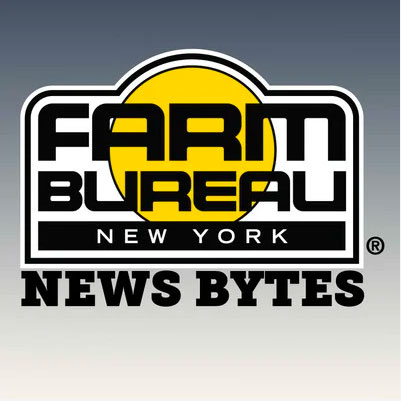Recent Information on HPAI in Dairy Cattle
To Date, No Cases of Virus Have Been Found in New York State
(UPDATED: July 2, 2024)
Recent News on HPAI in Dairy Cattle:
- New York State Department of Agriculture Announces Testing Requirements for Lactating Dairy Cattle Entering Fairs or Exhibitions to Prevent HPAI Transmission.
- According to Reuters, The U.S. government has awarded $176 million to Moderna to advance the development of its bird flu vaccine, the company said on Tuesday, July 2 as concerns rise over a multi-state outbreak of H5N1 virus in dairy cows and infections of three dairy workers since March.
- Avian influenza virus type A (H5N1) has been confirmed in dairy cattle in 12 states: 27 herds in Idaho, 25 in Michigan, 22 in Colorado, 21 in Texas, 11 in Iowa, eight in New Mexico, six in Minnesota, five in South Dakota, four in Kansas, and one each in North Carolina, Ohio, and Wyoming.
- Tests so far indicate that the virus detected in dairy cattle is H5N1, Eurasian lineage goose/Guangdong clade 2.3.4.4b. This is the same clade that has been affecting wild birds and commercial poultry flocks and that has caused sporadic infections in several species of wild mammals and neonatal goats in one herd in the United States.
- Common clinical signs in affected cows include low appetite, reduced milk production, and abnormal appearance of milk (thickened, discolored).
- While avian influenza virus type A (H5N1) is associated with high morbidity and mortality in birds ("highly pathogenic"), this hasn't been the case for dairy cattle. Affected animals reportedly recover with supportive treatment and with little to no mortality.
- The spread of the H5N1 virus within and among herds indicates that bovine-to-bovine spread occurs. Evidence also indicates that the virus can spread from dairy cattle premises to nearby poultry facilities. Potential risk factors for local transmission between facilities include shared personnel between premises, shared vehicles between premises, and frequent visitors on/off premises.
- The USDA has urged veterinarians and producers to practice good biosecurity; monitor for, separate, and test sick animals; minimize cattle movements; and isolate and monitor any newly received dairy cattle for 30 days upon arrival. In addition, since April 29, a federal order has been in effect, requiring testing of lactating dairy cattle for HPAI prior to interstate movement, and reporting of positive nucleic acid detection and serology results for livestock to APHIS. While the movement restriction initially applies to lactating dairy cows, this may be adjusted based on an evolving scientific understanding of the disease and risks. Find answers to frequently asked questions about the order here and guidance for producers and veterinarians here.
- At the state level, at least 22 states have issued restrictions on the importation of dairy cattle:
Alabama, Arizona, Arkansas, California, Delaware, Florida, Hawaii, Idaho, Kansas, Kentucky, Louisiana, Maryland, Mississippi, Nebraska, New York, North Carolina, Oregon, Pennsylvania, South Dakota, Tennessee, Utah, and West Virginia. State-specific restrictions on cattle movement must be followed in addition to federal requirements. If and where a particular state’s requirements are more restrictive than the federal order, that state’s requirements must be followed.
FOR MORE INFORMATION ON HPAI (listed alphabetically):
- APHIS Requirements and Recommendations for HPAI (requirements for interstate movement of cattle; biosecurity guidance; milk disposal)
- Click here to learn more about CDC’s response to H5N1.
- Click here to learn more about herd health from Cornell PRO-DAIRY.
- Click here to read about herd health and financial impacts from a Michigan State University report.
- ELAP Information Regarding HPAI (how payments are calculated, when and how to test, etc.)
- Click here to learn more about FDA’s response to H5N1.
- Click here for a complete list of all HPAI cases reported in domestic and wild animals from the USDA.
-
USDA Herd Status Program (how to apply)
-
Click here to learn more about USDA’s response to H5N1 in dairy cattle.
-
USDA Support For Producers With Affected Dairy Premises (how much money affected dairy farms can receive for testing, treatment, biosecurity, clearance, etc.)
-
The USDA encourages industry members to follow these steps in addition to the state’s guidelines to help ensure the health and safety of animals at county fairs across New York, in addition to The Great New York State Fair. Animal health requirements for 2024 county fairs and The New York State Fair are outlined in three documents, listed below. These documents currently apply to animals, including poultry, at fairs in 2024.
-
The USDA released two new reports in mid-June:



